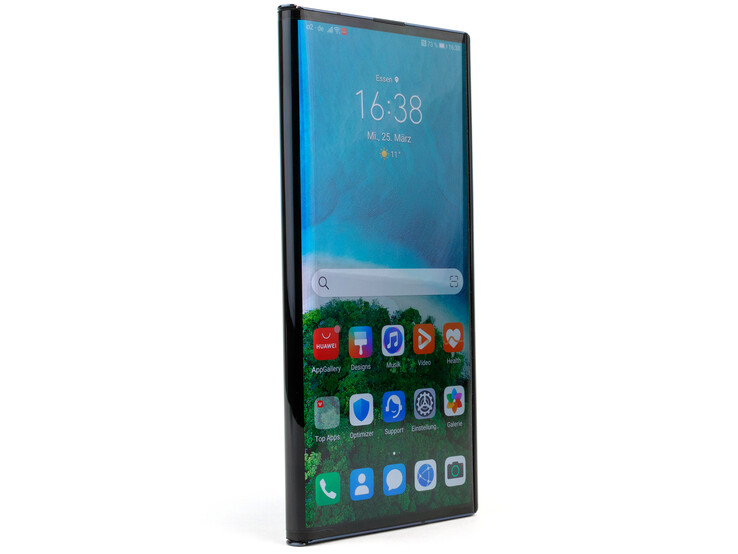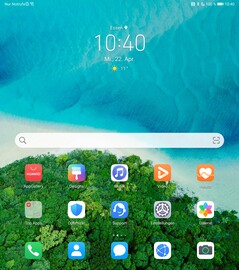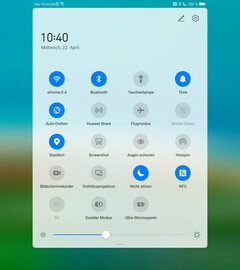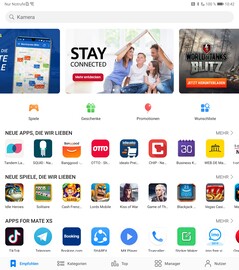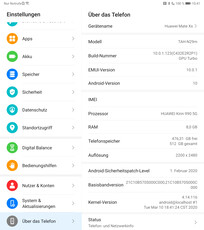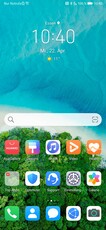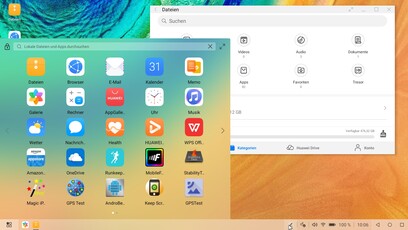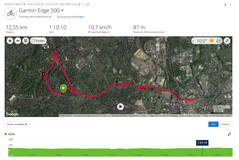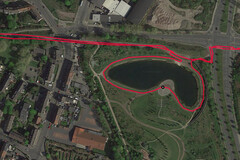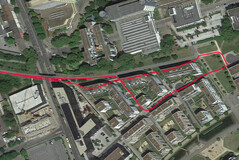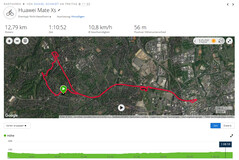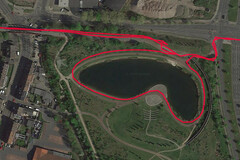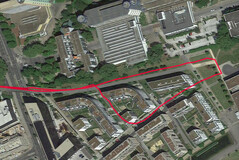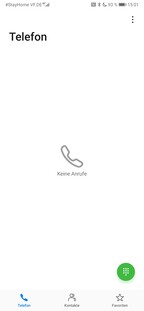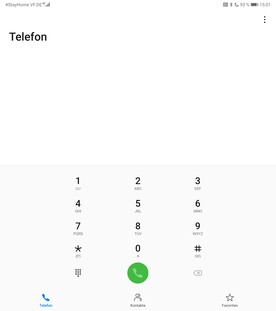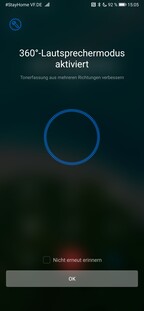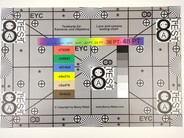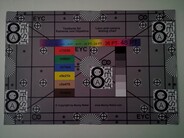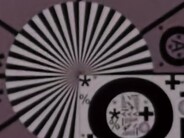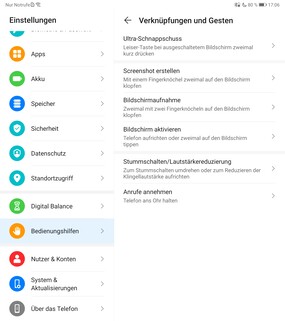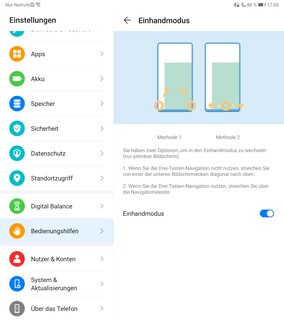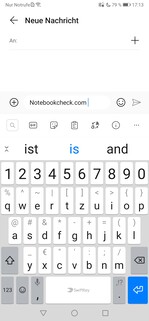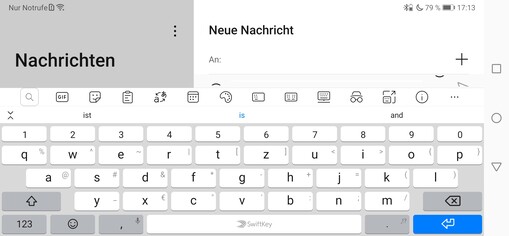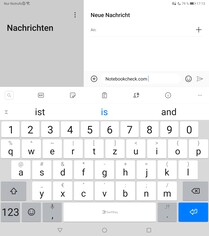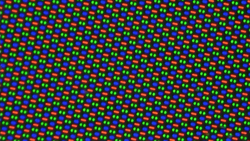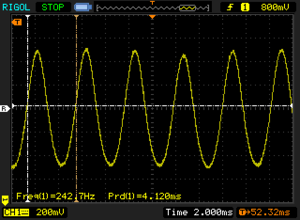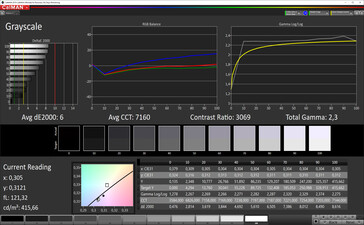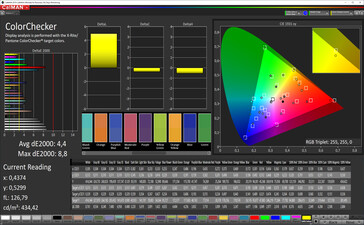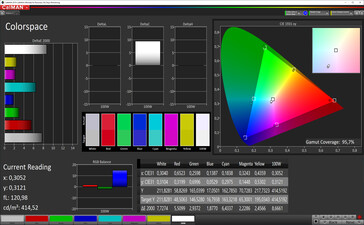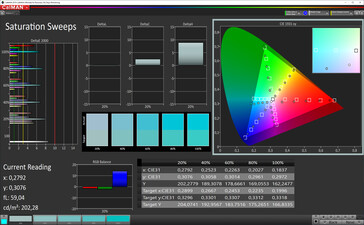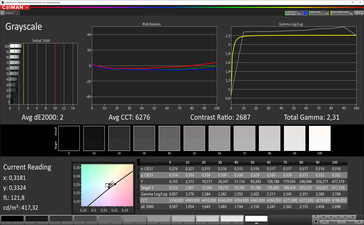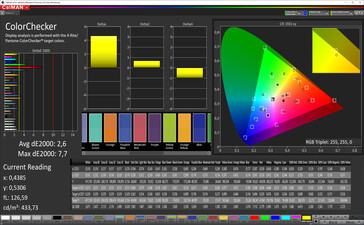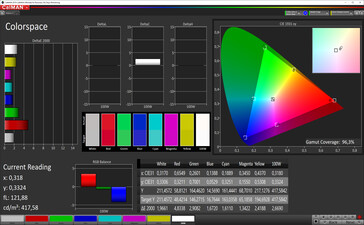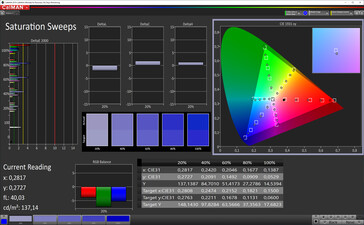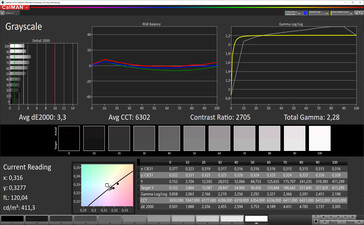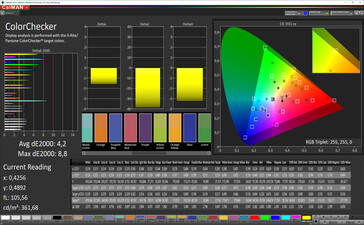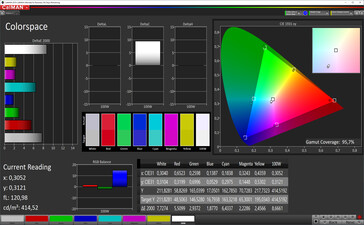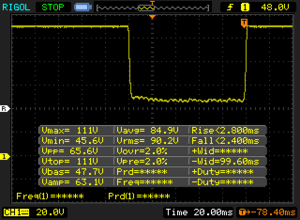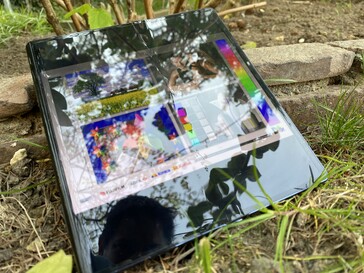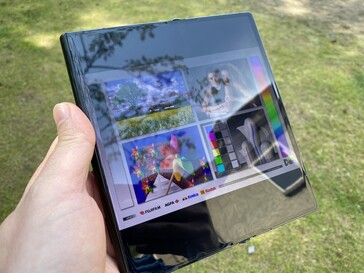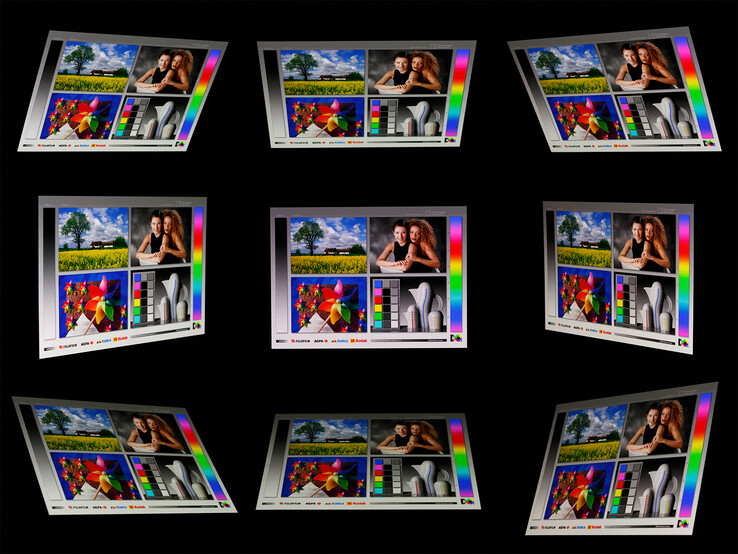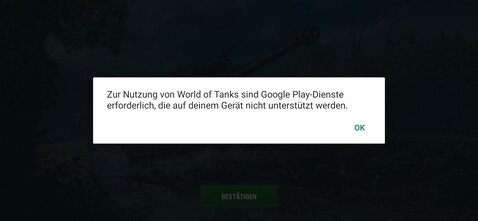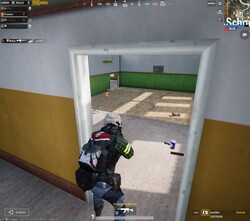Huawei Mate Xs Smartphone Review - Foldable with Drawbacks
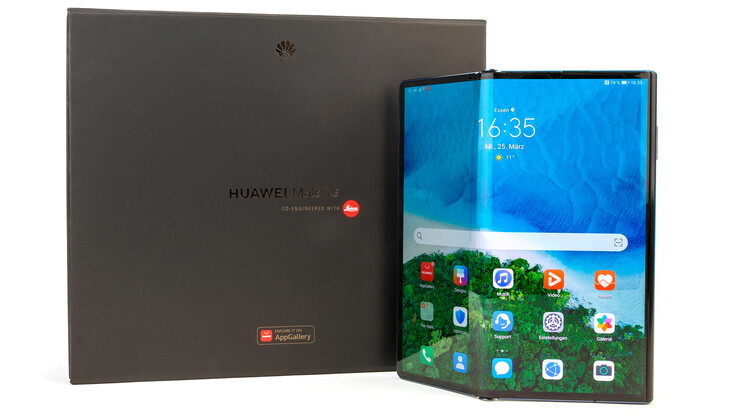
Last year, the Mate X was Huawei's quick response to the Samsung Galaxy Fold. While the Korean manufacturer was fighting with the first generation of its foldable smartphone, the first problems with the Mate X began to surface in the summer, as the highly regarded hinge was possibly damaging the display. On top of that, the trade war, which begun in early 2019 between the US and China, was an added obstacle that prompted Huawei to ultimately hold off on shipping the Mate X to Western markets.
Despite the restrictions, the upgraded successor named Mate Xs has now been released and offers an improved hinge, more storage, a more powerful SoC and 5G capabilities. Simultaneously, the price has climbed up to a staggering 2,499 Euros ($2,700).
Competing Devices
Rating | Date | Model | Weight | Drive | Size | Resolution | Price |
|---|---|---|---|---|---|---|---|
| 82.6 % v7 (old) | 04 / 2020 | Huawei Mate Xs Kirin 990 5G, Mali-G76 MP16 | 300 g | 512 GB UFS 3.0 Flash | 8.00" | 2480x2200 | |
| 86.4 % v7 (old) | 10 / 2019 | Samsung Galaxy Fold SD 855, Adreno 640 | 276 g | 512 GB UFS 3.0 Flash | 7.30" | 2152x1536 | |
| 82.5 % v7 (old) | 03 / 2020 | Samsung Galaxy Z Flip SD 855+, Adreno 640 | 183 g | 256 GB UFS 3.0 Flash | 6.70" | 2636x1080 | |
| 87.1 % v7 (old) | 09 / 2019 | Apple iPhone 11 Pro Max A13 Bionic, A13 Bionic GPU | 226 g | 64 GB SSD | 6.50" | 2688x1242 | |
| 84.6 % v7 (old) | 11 / 2019 | LG G8X ThinQ SD 855, Adreno 640 | 192 g | 128 GB UFS 2.1 Flash | 6.40" | 2340x1080 | |
| 89.4 % v7 (old) | 04 / 2020 | Huawei P40 Pro Kirin 990 5G, Mali-G76 MP16 | 209 g | 256 GB UFS 3.0 Flash | 6.58" | 2640x1200 |
Case - Creaky Construction
When opened, the Huawei Mate Xs is an almost square 8-inch tablet that is very slim and comfortable to hold thanks to its thick bump in the center. When folded, the smartphone is not exactly a lightweight at 300 g and although it is fairly thick at 11 mm, it is still significantly thinner than the Fold (17.1 mm).
The foldable plastic panel is covered by a screen protector that should not be removed. The borders of the latter are clearly noticeable, and they collect dust relatively quickly. The hinge produces a crunch sound with every fold and the plastic cover covers the folds on the back. The plastic cover and the folds yield to small amounts of pressure in some places and the back can be slightly lifted, which does not inspire confidence in the robustness or dirt resistance of the construction. The build quality is good otherwise.
The display is spread apart by a fairly powerful spring mechanism that makes it almost impossible to use the hinge of the Mate Xs as a stand. The battery is fixed and there is no certification for water and dust protection.
Features - Mate Xs Supports NM Cards
Despite its sizeable internal storage, the total storage capacity of the Huawei Mate Xs can also be expanded via a Nano Memory card with up to 256 GB. While the cards are smaller than traditional microSD cards, their maximum capacities are lower and they are more expensive.
The USB 3.1 port is useful for fast data transfers and also for wired video output to HDMI and DisplayPort interfaces. Similarly, there is a desktop mode available.
There is also a wide range of additional features. Bluetooth 5.0 and NFC are supported, and there is an IR blaster for controlling electronic devices and DSLRs as well as wired quick-charging with up to 55 watts. By contrast, there is no headphone jack, FM receiver or notification LED and the tasks of the latter are instead handled by the optional always-on display feature.
Software - Huawei Phone with EMUI 10.0 and AppGallery
The Huawei Mate Xs uses Android 10 as its operating system with Huawei's own AppGallery instead of Google services. Due to this, many popular apps are not available. AppSearch partially makes up for this by searching for apps on freely accessible stores including the Amazon app store and APK web pages. A handy feature of the AppGallery allows users to update apps downloaded from external sources. Additionally, Huawei offers many alternative apps from other developers.
Since there is no DRM certification, protected content cannot be viewed in HD quality.
Communication and GNSS - World Phone with 5G and Wi-Fi 5
The Wi-Fi module of the Mate Xs supports Wi-Fi 5 with VHT160 and its transfer rates in conjunction with our reference router Netgear Nighthawk AX12 are above average, at least when it comes to receiving data. The range is good as well.
In terms of mobile networking, the foldable Huawei phone is compatible with all modern mobile communications standards and supports a very wide frequency range. As a result, users should be able to use the smartphone worldwide without any issues.
| Networking | |
| iperf3 transmit AX12 | |
| Apple iPhone 11 Pro Max | |
| Samsung Galaxy Fold | |
| Huawei Mate Xs | |
| Samsung Galaxy Z Flip | |
| LG G8X ThinQ | |
| iperf3 receive AX12 | |
| Huawei Mate Xs | |
| Samsung Galaxy Fold | |
| LG G8X ThinQ | |
| Samsung Galaxy Z Flip | |
| Apple iPhone 11 Pro Max | |
The Mate Xs supports the satellite networks GPS, QZSS, Galileo, GLONASS and BeiDou for locating purposes with the first three supporting dual-band. Outdoors, the satellite uplink is established very quickly, whereas indoors, it requires slightly more time and the accuracy is lower as well.
We also compared the foldable smartphone to the Garmin Edge 500 on a short bike ride and the test device performed admirably with very precise locating capabilities and only minor deviations from the traversed route.
Telephony and Call Quality
While Huawei generally delivers a good experience on its premium devices in terms of the call quality, the Mate Xs is unfortunately an exception. Voices captured by the foldable smartphone sound slightly distorted and very dull, while also being accompanied by a permanent high-pitched sound on our test device. The excellent ambient noise cancelling makes this even more disappointing.
While the voices of Mate users sound slightly brighter when using the speakerphone, the clarity still leaves something to be desired. Furthermore, there is a fairly noticeable echo. That being said, the range of the microphone is good and we did not observe a drop-off in terms of the call quality after putting the phone down on a table or on a surface even farther away.
The Wi-Fi calling and VoLTE features are supported. The Mate Xs has a hybrid SIM slot, which accepts either two nano-SIM cards or a memory card instead of the second SIM card. There is no integrated eSIM.
Cameras - Strong Quad-camera System for All Directions
On paper, the camera setup of the Huawei Mate Xs is reminiscent of that of the P30 with an extra ToF sensor. The zoom optics is capable of 3x optical zoom, 5x hybrid zoom and an up to 30x digital zoom. Furthermore, the telephoto lens is the only sensor to support optical image stabilization.
Thanks to the foldable display, the main camera doubles as a front camera, which not only offers a better quality but also more options in general. Additionally, the secondary screen can be activated when the phone is closed, allowing both the person in front of and behind the camera to get a look at the potential picture.
The quality of the Leica quad-camera is very good and certainly comparable to that of the aforementioned P30. For dark scenes in particular, an extra OIS for the main optics would have been desirable, although the software features are fairly good at hiding the effects of the missing OIS.
The Mate Xs is able to capture video at up to Ultra HD and up to 60 frames per second, although then, the recordings are limited to 10 minutes. The autofocus is very fast and quickly brings visible faces into focus. The microphones showed themselves to be very sensitive during video recordings, providing clear mono sound with little static and a slight echo in some cases. Additionally, the zoom between the individual optics is infinitely variable from the ultra-wide-angle lens all the way to 10x zoom.
Under controlled lighting conditions, the Mate Xs also performs well. However, at its full 40 MP, the test chart does not look extraordinarily sharp. In dark environments, the optics is still able to capture a vast amount of light.
There are no severe deviations in terms of the color representation. In daylight, the colors are brightened fairly aggressively, which tends to result in a bigger discrepancy between the image and the actual color than in the dark.
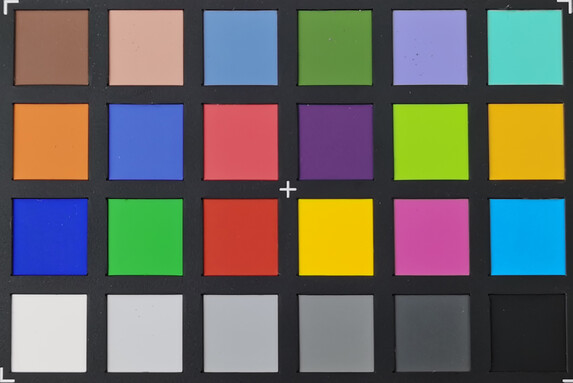

Accessories and Warranty - Strong Charger Included
The package of the Huawei Mate Xs includes a flexible protective frame for the smartphone, a USB Type-C headset, a charger, a USB cable (Type-C to Type-C), a SIM tool and documentation. The charger can deliver up to 65 watts, making it very powerful and suitable for charging even smaller laptops, and at around 1.8 meters the USB cable is relatively long.
Huawei offers a two-year warranty to customers in Europe and China. In a warranty case within this period, pick-up and returns are free. Additionally, users have the option to bring the Mate Xs to a Huawei service center for free maintenance and display protection replacement. Users who accidentally damage the display will receive a one-time 50% discount in the first year or a 30% discount in the second year on a display replacement.
Input Devices & Handling - Mate Xs with a Good Fingerprint Sensor
The screen protector on the Huawei Mate Xs has decent gliding properties and the touchscreen below it responds to inputs quickly and reliably. SwiftKey has been chosen as the keyboard app and offers very large keys when the phone is opened and oblong keys when the smartphone is closed. Alternatively, other layouts can be set up.
Furthermore, the Mate Xs also comes with familiar accessibility tools such as a glove mode and a one-handed mode. However, neither the three-key navigation nor gestures of the latter work after the smartphone has been opened. While knuckle gestures do work, the display visibly yields to knocking, which never quite feels right.
The fingerprint sensor on the side works quickly and reliably, whereas facial recognition is not available. Users who like to multi-task can display up to three apps simultaneously, although this is not possible with all apps and sometimes is slightly cumbersome to set up.
Display - Flexible, But Not Particularly Bright
The 8.0-inch foldable OLED display of the Huawei Mate Xs has a resolution of 2480x2200 pixels, which results in an overall high sharpness. While the nearly square aspect ratio can be advantageous during daily use when viewing a lot of text, there are big black bars shown when watching videos.
The maximum brightness of the panel is not particularly high, and here it is unable to match current high-end competitors. In our comparison, the iPhone 11 Pro Max is the frontrunner in this discipline with a brightness that is almost twice as high as that of our test device. Even when displaying evenly distributed bright and dark areas (APL50), the brightness only increases to up to 474 cd/m². At least there are no additional limitations when controlling the brightness manually.
As per usual, the OLED panel uses pulse-width modulation to control the brightness and the frequency of our Mate Xs fluctuates slightly between 235.8 Hz and 242.7 Hz. Thus, we expect that sensitive users will experience issues. Under the menu item eye care, there is not only a blue-light filter but also a so-called flicker reduction feature (DC dimming), which puts the panel into a consistent 60-Hz mode.
| |||||||||||||||||||||||||
Brightness Distribution: 99 %
Center on Battery: 417 cd/m²
Contrast: ∞:1 (Black: 0 cd/m²)
ΔE ColorChecker Calman: 2.6 | ∀{0.5-29.43 Ø4.83}
ΔE Greyscale Calman: 2 | ∀{0.09-98 Ø5.1}
96.3% sRGB (Calman 2D)
Gamma: 2.31
CCT: 6276 K
| Huawei Mate Xs OLED, 2480x2200, 8" | Samsung Galaxy Fold Infinity Flex-Display (Dynamic AMOLED, 7,3") und Super AMOLED (4,6"), 2152x1536, 7.3" | Samsung Galaxy Z Flip Dynamic AMOLED, 2636x1080, 6.7" | Apple iPhone 11 Pro Max OLED, 2688x1242, 6.5" | LG G8X ThinQ OLED, 2340x1080, 6.4" | |
|---|---|---|---|---|---|
| Screen | 24% | 19% | 47% | -48% | |
| Brightness middle | 417 | 531 27% | 705 69% | 790 89% | 570 37% |
| Brightness | 418 | 532 27% | 709 70% | 790 89% | 581 39% |
| Brightness Distribution | 99 | 97 -2% | 97 -2% | 97 -2% | 90 -9% |
| Black Level * | |||||
| Colorchecker dE 2000 * | 2.6 | 2.3 12% | 3.1 -19% | 1.4 46% | 6.27 -141% |
| Colorchecker dE 2000 max. * | 7.7 | 3.7 52% | 5.4 30% | 3.4 56% | 9.75 -27% |
| Greyscale dE 2000 * | 2 | 1.5 25% | 2.7 -35% | 1.9 5% | 5.7 -185% |
| Gamma | 2.31 95% | 2.15 102% | 2.11 104% | 2.23 99% | 2.37 93% |
| CCT | 6276 104% | 6631 98% | 6264 104% | 6466 101% | 7309 89% |
* ... smaller is better
Screen Flickering / PWM (Pulse-Width Modulation)
| Screen flickering / PWM detected | 242.7 Hz | ≤ 99 % brightness setting | |
The display backlight flickers at 242.7 Hz (worst case, e.g., utilizing PWM) Flickering detected at a brightness setting of 99 % and below. There should be no flickering or PWM above this brightness setting. The frequency of 242.7 Hz is relatively low, so sensitive users will likely notice flickering and experience eyestrain at the stated brightness setting and below. In comparison: 53 % of all tested devices do not use PWM to dim the display. If PWM was detected, an average of 8327 (minimum: 5 - maximum: 343500) Hz was measured. | |||
We further analyzed the color accuracy of the Mate Xs with the software CalMAN. Like with the Chinese manufacturer's other phones, users of the foldable phone can choose between the two color profiles vivid and normal with the former being the default. Unlike its siblings however, the Mate Xs does not use the smaller sRGB color space when the mode normal is selected to achieve a more accurate representation. Instead, it uses the larger DCI-P3 color space, which is also targeted by the vivid mode. Consequentially, the Mate Xs achieves slightly less precise deltaE values and reaches the most accurate colors with a combination of the mode vivid and the color balance setting warm. Although the color accuracy is quite good overall, it is just average compared to the other devices in our comparison.
Display Response Times
| ↔ Response Time Black to White | ||
|---|---|---|
| 3.2 ms ... rise ↗ and fall ↘ combined | ↗ 2 ms rise | |
| ↘ 1.2 ms fall | ||
| The screen shows very fast response rates in our tests and should be very well suited for fast-paced gaming. In comparison, all tested devices range from 0.1 (minimum) to 240 (maximum) ms. » 13 % of all devices are better. This means that the measured response time is better than the average of all tested devices (20.5 ms). | ||
| ↔ Response Time 50% Grey to 80% Grey | ||
| 5.2 ms ... rise ↗ and fall ↘ combined | ↗ 2.8 ms rise | |
| ↘ 2.4 ms fall | ||
| The screen shows very fast response rates in our tests and should be very well suited for fast-paced gaming. In comparison, all tested devices range from 0.165 (minimum) to 636 (maximum) ms. » 15 % of all devices are better. This means that the measured response time is better than the average of all tested devices (32.1 ms). | ||
Performance - Kirin 990 5G without Turbo
Huawei has consistently equipped all of its premium products from the first half of 2020 with the Kirin 990 5G and the Mate Xs is no exception. Compared to the non-5G 990, the maximum clock rate of this SoC is slightly higher. However, Huawei has not opted to give users access to the performance mode this time around, and although this is inconsequential for day-to-day use, it also means that the full potential of the chipset is locked away.
In our benchmarks, this results in a noticeable difference when compared to the P40 Pro, which uses the same SoC but with the performance mode available. As the 3DMark results show, this also heavily affects the graphics performance.
| PCMark for Android | |
| Work performance score (sort by value) | |
| Huawei Mate Xs | |
| Samsung Galaxy Fold | |
| Samsung Galaxy Z Flip | |
| LG G8X ThinQ | |
| Huawei P40 Pro | |
| Average HiSilicon Kirin 990 5G (10628 - 14814, n=4) | |
| Work 2.0 performance score (sort by value) | |
| Huawei Mate Xs | |
| Samsung Galaxy Fold | |
| Samsung Galaxy Z Flip | |
| LG G8X ThinQ | |
| Huawei P40 Pro | |
| Average HiSilicon Kirin 990 5G (8512 - 11509, n=4) | |
| AnTuTu v8 - Total Score (sort by value) | |
| Huawei Mate Xs | |
| Samsung Galaxy Z Flip | |
| Apple iPhone 11 Pro Max | |
| LG G8X ThinQ | |
| Huawei P40 Pro | |
| Average HiSilicon Kirin 990 5G (450373 - 527856, n=4) | |
| VRMark - Amber Room (sort by value) | |
| Huawei Mate Xs | |
| Huawei P40 Pro | |
| Average HiSilicon Kirin 990 5G (4980 - 5037, n=2) | |
| Average of class Smartphone (n=1last 2 years) | |
| Basemark ES 3.1 / Metal - offscreen Overall Score (sort by value) | |
| Huawei Mate Xs | |
| Huawei P40 Pro | |
| Average HiSilicon Kirin 990 5G (2076 - 2122, n=2) | |
| Average of class Smartphone (205 - 7616, n=46, last 2 years) | |
The Mate Xs achieves good but not great results in our browser benchmarks. During daily use, web browsing is a pleasant experience and opening the phone is particularly beneficial for the readability. Unfortunately, a few URLs only show the mobile version of their site despite the big screen size. Here, it would be preferable to view the desktop version by default without having to change the settings in advance.
| Jetstream 2 - 2.0 Total Score | |
| Average of class Smartphone (13.8 - 387, n=154, last 2 years) | |
| Apple iPhone 11 Pro Max (Safari Mobile 13.1) | |
| Huawei P40 Pro (Huawei Browser 10.1) | |
| LG G8X ThinQ (Chrome 78) | |
| Samsung Galaxy Z Flip (Chrome 80) | |
| Average HiSilicon Kirin 990 5G (55.6 - 70, n=4) | |
| Huawei Mate Xs (Huawei Browser 10.1) | |
| Samsung Galaxy Fold (Samung Browser 10.1) | |
| JetStream 1.1 - Total Score | |
| Apple iPhone 11 Pro Max (Safari Mobile 13.1) | |
| Huawei P40 Pro (Huawei Browser 10.1) | |
| Samsung Galaxy Z Flip (Chrome 80) | |
| Samsung Galaxy Fold (Samsung Browser 10.1) | |
| Average HiSilicon Kirin 990 5G (103.2 - 116.6, n=4) | |
| LG G8X ThinQ (Chrome 78) | |
| Huawei Mate Xs (Huawei Browser 10.1) | |
| Speedometer 2.0 - Result | |
| Average of class Smartphone (15.2 - 585, n=137, last 2 years) | |
| Apple iPhone 11 Pro Max (Safari Mobile 13.1) | |
| Huawei P40 Pro (Huawei Browser 10.1) | |
| Average HiSilicon Kirin 990 5G (63 - 71.8, n=4) | |
| LG G8X ThinQ (Chome 78) | |
| Huawei Mate Xs (Huawei Browser 10.1) | |
| Samsung Galaxy Z Flip (Chrome 80) | |
| Samsung Galaxy Fold (Samsung Browser 10.1) | |
| WebXPRT 3 - Overall | |
| Apple iPhone 11 Pro Max (Safari Mobile 13.1) | |
| Average of class Smartphone (38 - 347, n=55, last 2 years) | |
| Samsung Galaxy Fold (Samsung Browser 10.1) | |
| Average HiSilicon Kirin 990 5G (95 - 124, n=3) | |
| Samsung Galaxy Z Flip (Chrome 80) | |
| Huawei Mate Xs (Huawei Browser 10.1) | |
| LG G8X ThinQ (Chrome 78) | |
| Huawei P40 Pro | |
| Octane V2 - Total Score | |
| Apple iPhone 11 Pro Max (Safari Mobile 13.1) | |
| Average of class Smartphone (2228 - 100368, n=204, last 2 years) | |
| Samsung Galaxy Fold (Samsung Browser 10.1) | |
| Samsung Galaxy Z Flip (Chrome 80) | |
| Huawei P40 Pro (Huawei Browser 10.1) | |
| LG G8X ThinQ (Chrome 78) | |
| Average HiSilicon Kirin 990 5G (20917 - 23690, n=4) | |
| Huawei Mate Xs (Huawei Browser 10.1) | |
| Mozilla Kraken 1.1 - Total | |
| Huawei Mate Xs (Huawei Browser 10.1) | |
| LG G8X ThinQ (Chrome 78) | |
| Average HiSilicon Kirin 990 5G (1914 - 2287, n=4) | |
| Samsung Galaxy Z Flip (Chrome 80) | |
| Samsung Galaxy Fold (Samsung Browser 10.1) | |
| Huawei P40 Pro (Huawei Browser 10.1) | |
| Average of class Smartphone (277 - 28190, n=158, last 2 years) | |
| Apple iPhone 11 Pro Max (Safari Mobile 13.1) | |
* ... smaller is better
The 512-GB UFS 3.0 storage is not only very large but also extremely fast. Similarly, the transfer rates of the integrated card reader are good and almost as high as the Nano Memory card standard allows.
| Huawei Mate Xs | Samsung Galaxy Fold | Samsung Galaxy Z Flip | LG G8X ThinQ | Huawei P40 Pro | Average 512 GB UFS 3.0 Flash | Average of class Smartphone | |
|---|---|---|---|---|---|---|---|
| AndroBench 3-5 | -34% | -4% | -33% | 2% | 1% | 108% | |
| Sequential Read 256KB | 1767 | 1303 -26% | 1443 -18% | 705 -60% | 1775 0% | 1593 ? -10% | 2158 ? 22% |
| Sequential Write 256KB | 402.7 | 394.5 -2% | 523 30% | 497.1 23% | 395.7 -2% | 565 ? 40% | 1749 ? 334% |
| Random Read 4KB | 202.9 | 158.4 -22% | 184.5 -9% | 160.5 -21% | 228.1 12% | 211 ? 4% | 294 ? 45% |
| Random Write 4KB | 259.1 | 34.41 -87% | 212.9 -18% | 30.2 -88% | 271.8 5% | 196.5 ? -24% | 336 ? 30% |
| Sequential Read 256KB SDCard | 82.6 ? | 68.9 ? -17% | 82.3 ? 0% | 82.5 ? 0% | |||
| Sequential Write 256KB SDCard | 72.1 ? | 47.7 ? -34% | 68.1 ? -6% | 69.8 ? -3% |
Gaming - Pure Gaming Joy, If It Works
The hardware of the Huawei Mate Xs delivers strong gaming performance and the large display allows for a better view on the action and more than enough space for control elements. Unfortunately, we were not able to analyze many titles with GameBench, since for example Asphalt 9 would always crash immediately and World of Tanks showed an error message indicating that Google Play services were required, even though both games were downloaded from the AppGallery. This bug can likely be traced back to the EMUI 10.0 software, since it did not occur on smartphones running EMUI 10.1.
By contrast, PUBG, which we downloaded from the Amazon app store, ran without any issues and it adjusted well to the large display despite the unique aspect ratio. The location of the speakers is optimal, since it is impossible to block both of them simultaneously, even if the user has big hands.
Emissions - Mate Xs with Cool Surfaces
Temperature
Even under prolonged loads, the surface temperatures of the Mate Xs remain comfortably low. On the inside, a cooling solution consisting of flexible bionic graphite is supposed to ensure a consistent SoC performance.
We tested this claim with the help of GFXBench's battery test. During this test, the benchmark app runs the same scenario in a loop 30 times and records both the frame rate and the battery level throughout the duration. While there were no issues during the older T-Rex test, the SoC's performance dropped by around 50% over time in the more demanding Manhattan benchmark. That being said, the performance level is still very high, and there are currently only very few apps where users will be faced with limitations.
(+) The maximum temperature on the upper side is 33.8 °C / 93 F, compared to the average of 35.1 °C / 95 F, ranging from 21.9 to 63.7 °C for the class Smartphone.
(+) The bottom heats up to a maximum of 34 °C / 93 F, compared to the average of 33.9 °C / 93 F
(+) In idle usage, the average temperature for the upper side is 30.7 °C / 87 F, compared to the device average of 32.9 °C / 91 F.
Speakers
The Mate Xs is equipped with two speakers, which produce a fairly good sound at medium volume levels in particular, for media playback. Although higher frequencies become too present at higher volume levels, which makes them sound somewhat tinny, we did not observe any severe distortions.
Wired headphones can be connected via USB-C, while Bluetooth is available for wireless audio and the latter is compatible with the audio codecs SBC, AAC and LDAC.
Huawei Mate Xs audio analysis
(±) | speaker loudness is average but good (81.9 dB)
Bass 100 - 315 Hz
(-) | nearly no bass - on average 18.4% lower than median
(±) | linearity of bass is average (11.8% delta to prev. frequency)
Mids 400 - 2000 Hz
(±) | higher mids - on average 5.3% higher than median
(+) | mids are linear (5.1% delta to prev. frequency)
Highs 2 - 16 kHz
(±) | higher highs - on average 6.9% higher than median
(+) | highs are linear (6.1% delta to prev. frequency)
Overall 100 - 16.000 Hz
(±) | linearity of overall sound is average (21.2% difference to median)
Compared to same class
» 38% of all tested devices in this class were better, 8% similar, 54% worse
» The best had a delta of 12%, average was 36%, worst was 134%
Compared to all devices tested
» 57% of all tested devices were better, 7% similar, 36% worse
» The best had a delta of 4%, average was 24%, worst was 134%
Samsung Galaxy Fold audio analysis
(+) | speakers can play relatively loud (85.2 dB)
Bass 100 - 315 Hz
(-) | nearly no bass - on average 23.9% lower than median
(±) | linearity of bass is average (12.2% delta to prev. frequency)
Mids 400 - 2000 Hz
(+) | balanced mids - only 2.9% away from median
(+) | mids are linear (4.3% delta to prev. frequency)
Highs 2 - 16 kHz
(+) | balanced highs - only 2.8% away from median
(+) | highs are linear (2.7% delta to prev. frequency)
Overall 100 - 16.000 Hz
(±) | linearity of overall sound is average (16.7% difference to median)
Compared to same class
» 7% of all tested devices in this class were better, 6% similar, 87% worse
» The best had a delta of 12%, average was 36%, worst was 134%
Compared to all devices tested
» 27% of all tested devices were better, 7% similar, 66% worse
» The best had a delta of 4%, average was 24%, worst was 134%
Energy Management - Power-Hungry Display
Energy Consumption
The idle consumption is high, since the Huawei device demands more than 2 watts even at minimum brightness.
The 65-watt charger is a real advantage and comes with more than enough energy reserves for the foldable smartphone and its 4500 mAh battery, which it can fully charge within 55 minutes.
| Off / Standby | |
| Idle | |
| Load |
|
Key:
min: | |
| Huawei Mate Xs 4500 mAh | Samsung Galaxy Fold 4235 mAh | Samsung Galaxy Z Flip 3300 mAh | Apple iPhone 11 Pro Max 3969 mAh | LG G8X ThinQ 4000 mAh | Average HiSilicon Kirin 990 5G | Average of class Smartphone | |
|---|---|---|---|---|---|---|---|
| Power Consumption | 43% | 43% | 31% | 32% | 31% | 18% | |
| Idle Minimum * | 2.22 | 0.6 73% | 0.59 73% | 0.92 59% | 1.1 50% | 1.24 ? 44% | 0.868 ? 61% |
| Idle Average * | 3.94 | 0.85 78% | 0.88 78% | 2.9 26% | 1.49 62% | 2.33 ? 41% | 1.426 ? 64% |
| Idle Maximum * | 4.01 | 1 75% | 0.95 76% | 2.94 27% | 1.76 56% | 2.49 ? 38% | 1.588 ? 60% |
| Load Average * | 4.34 | 4.47 -3% | 4.97 -15% | 3.65 16% | 4.2 3% | 3.55 ? 18% | 7.17 ? -65% |
| Load Maximum * | 8.46 | 9.02 -7% | 8.37 1% | 6.18 27% | 9.2 -9% | 7.09 ? 16% | 10.8 ? -28% |
* ... smaller is better
Battery Life
The battery runtimes of the Huawei Mate Xs are okay and should be sufficient for one day of medium-intensity use. The foldable smartphone still has the least amount of stamina in our comparison in spite of being equipped with the biggest battery.
Particularly when browsing the web over Wi-Fi, the screen-on time is relatively low at only eight hours. Thus, users who browse the web frequently will likely have to charge their device before the evening comes.
| Huawei Mate Xs 4500 mAh | Samsung Galaxy Fold 4235 mAh | Samsung Galaxy Z Flip 3300 mAh | Apple iPhone 11 Pro Max 3969 mAh | LG G8X ThinQ 4000 mAh | Huawei P40 Pro 4200 mAh | |
|---|---|---|---|---|---|---|
| Battery Runtime | 28% | 3% | 81% | 93% | 24% | |
| Reader / Idle | 1071 | 1724 61% | 1741 63% | 2618 144% | 1474 38% | |
| H.264 | 762 | 1027 35% | 527 -31% | 1346 77% | 1137 49% | |
| WiFi v1.3 | 481 | 600 25% | 647 35% | 909 89% | 930 93% | 743 54% |
| Load | 357 | 316 -11% | 157 -56% | 408 14% | 198 -45% |
Pros
Cons
Verdict - Expensive Foldable
The Huawei Mate Xs is a good foldable smartphone that, with its display on the outside, has chosen a different approach to the concept than the Galaxy Fold. As a result, the display and the screen protector are stressed more than on the Samsung counterpart. However, this is not a huge issue thanks to the complimentary care service, provided there is a nearby service center.
Technologically, the Mate Xs offers many high-end features. Apart from the 5G chipset, this also includes the camera and the fast storage. In spite of its already massive capacity, the latter can even be expanded. In this regard, users will be limited to Huawei's own Nano Memory cards.
While the Huawei Mate Xs is an attractive foldable, it does not appear to be mature in all areas yet.
At around $2,700, the Huawei Mate Xs is far from being a bargain. Thus, buyers can expect only the best and Huawei delivers in many cases, while not skimping on the accessories, either. Although we expected more in terms of the display's maximum brightness, the lack thereof is not a huge surprise in light of the fairly high energy consumption and likely a compromise that was necessary in order to achieve acceptable runtimes.
Furthermore, we criticize the Chinese manufacturer for the phone's build quality. The hinge creaks fairly loudly and makes a less robust impression than we had anticipated. On top of that, the back of the case is too flexible in some areas.
Moreover, there are limitations due to the trade war with the US such as the omission of Google services. EMUI 10.0 does not look as though it has been perfectly prepared for this situation, either. Since particularly when gaming, the ported software does not work flawlessly yet, we are hoping for a quick update to version 10.1.
The Huawei Mate Xs certainly is not a device for everyone. The high price will likely be enough to deter most prospective buyers. That being said, it is still an appealing concept that in this case has been paired with many powerful components, which turn it into a unique smartphone that is sure to attract attention.
Huawei Mate Xs
- 08/31/2022 v7 (old)
Daniel Schmidt




